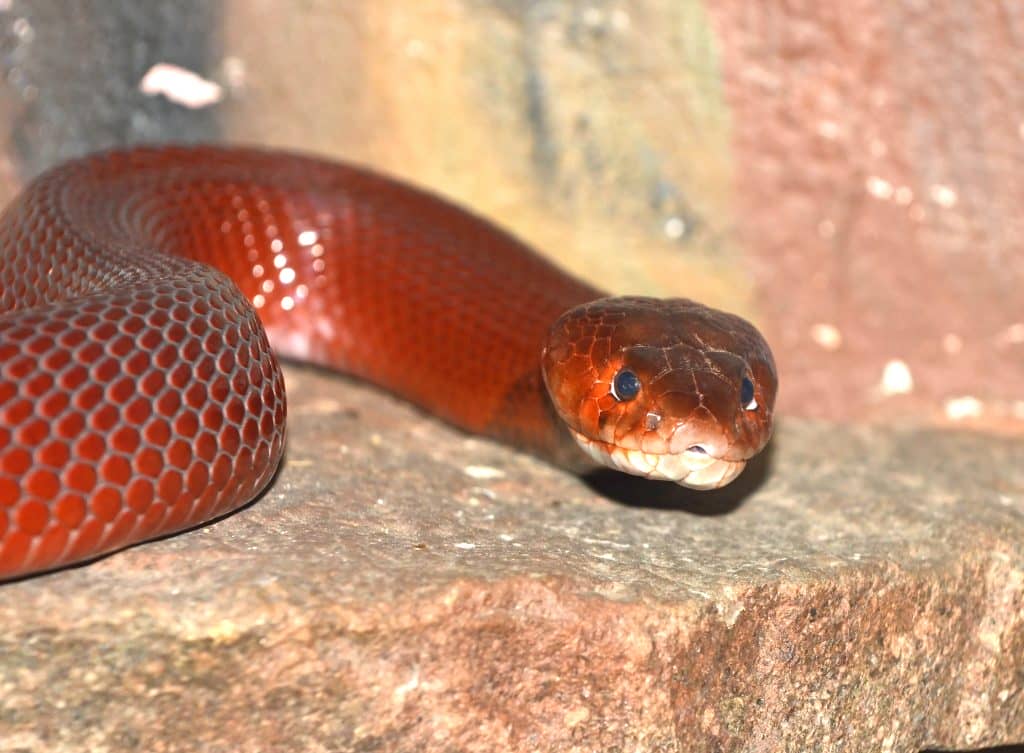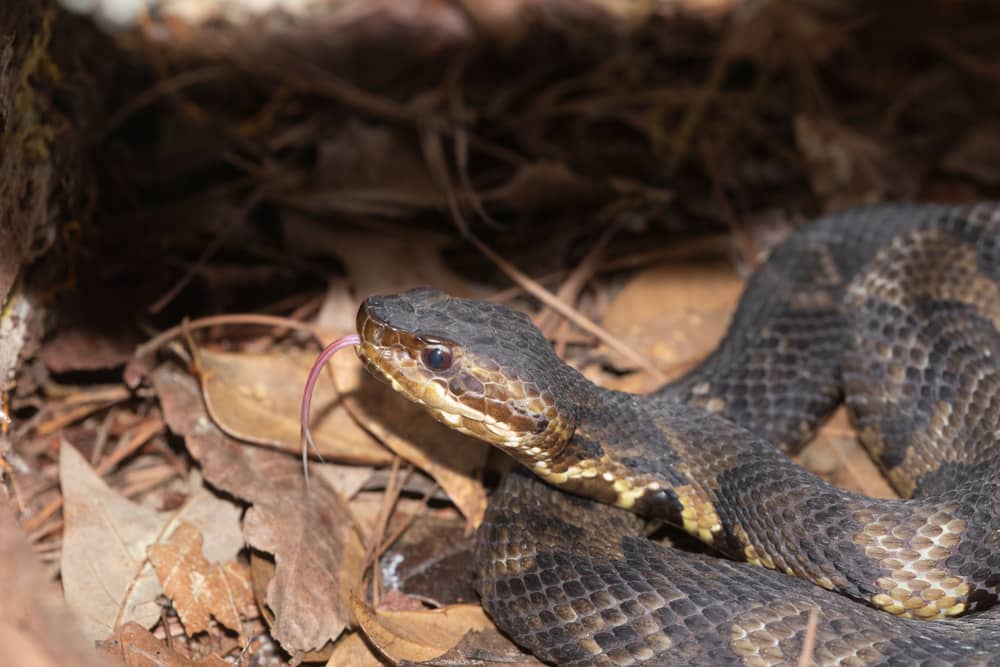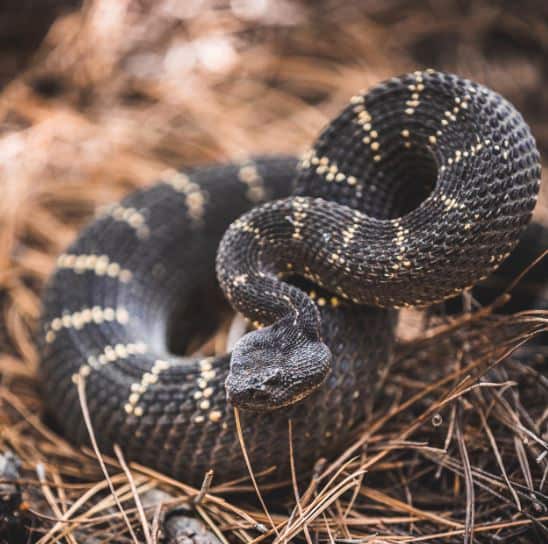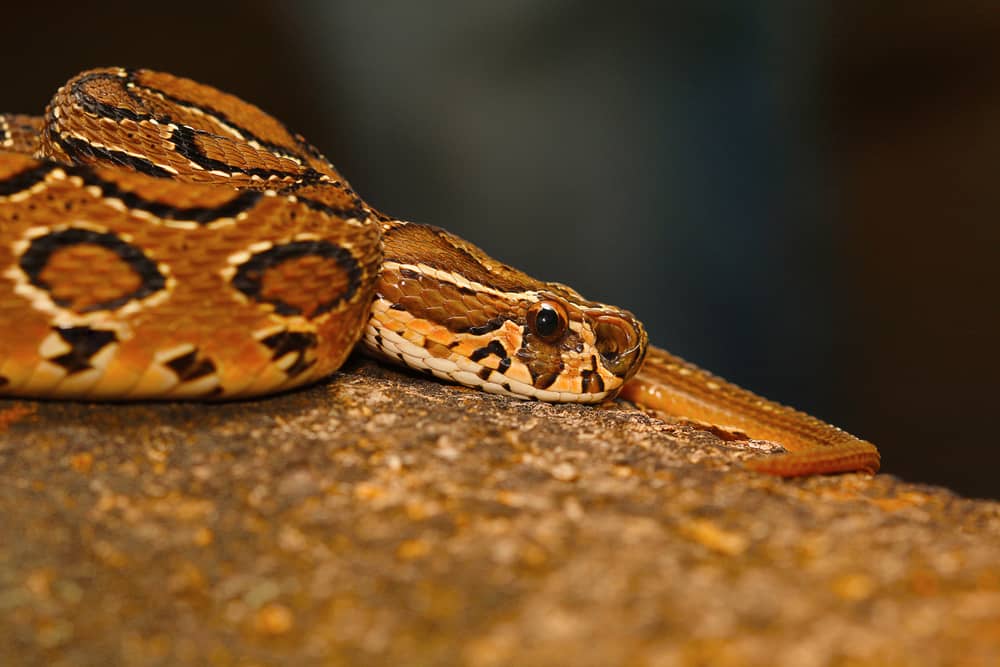Introduction
Let’s be honest—when someone mentions a “spitting cobra,” most of us imagine a fierce snake shooting venom like it’s got a built-in squirt gun. But the Red Spitting Cobra (Naja pallida) takes things to a whole new level. With its fiery color and defensive spray, it’s both mesmerizing and terrifying. But how much do you really know about this crimson serpent? Let’s dig deep and uncover the secrets of this venom-spitting marvel.
Taxonomy and Classification
Scientific Name and Common Names
The Red Spitting Cobra goes by the scientific name Naja pallida. You might also hear it referred to as the African Red Spitting Cobra or simply the Red Cobra.
Where It Fits in the Snake Family Tree
It belongs to the Elapidae family, which includes other venomous snakes like mambas, kraits, and coral snakes. Within this family, it is part of the genus Naja, which encompasses true cobras.
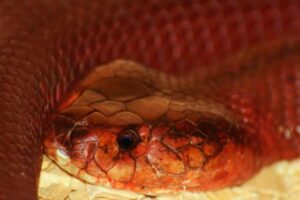
Physical Description
Coloration and Size
This snake is famous for its striking red to reddish-orange coloration, often accented with black markings on the throat and belly. Adults typically measure between 2.6 to 4 feet, though some can stretch slightly longer.
Unique Physical Features
Aside from its color, what really stands out is its ability to flare a hood—a classic cobra trait—and, of course, its venom-spitting prowess.
Differences Between Males and Females
Males and females look pretty similar, but females are often slightly smaller and more robust in build.
Geographic Range
Countries Where It’s Found
Red Spitting Cobras are native to East Africa, particularly in countries like Ethiopia, Kenya, Tanzania, Somalia, and Sudan.
Preferred Habitat and Climate
They favor dry savannas, scrublands, and arid regions, often near water sources or termite mounds. These snakes love the heat and thrive in semi-desert environments.
Behavior and Lifestyle
Diurnal or Nocturnal?
This cobra is mainly nocturnal, although it can sometimes be spotted during the day, especially in cooler weather.
Defensive vs. Aggressive Behavior
It prefers to avoid confrontation but isn’t afraid to stand its ground. When threatened, it raises its hood and can spit venom accurately up to 6 feet!
Social or Solitary?
Like most snakes, it’s a solitary creature, except during the breeding season.
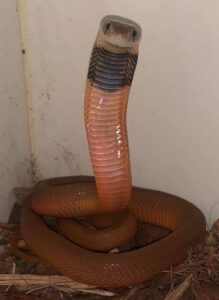
Diet and Hunting Techniques
What Do Red Spitting Cobras Eat?
Their diet includes rodents, birds, lizards, frogs, and even other snakes. Opportunistic eaters, they’ll go after whatever prey is available.
How They Hunt and Capture Prey
They rely on ambush techniques, striking fast and injecting venom to immobilize their prey before swallowing it whole.
The Venom Factor
Composition of Venom
The venom is a potent cocktail of neurotoxins and cytotoxins, which can cause paralysis, tissue damage, and intense pain.
How Far Can It Spit?
It can spit venom accurately up to 6–8 feet. And yes, it aims for the eyes, causing temporary or even permanent blindness if untreated.
Effects of the Venom on Humans and Prey
In prey, venom causes rapid paralysis and death. In humans, eye contact causes extreme pain, swelling, and vision issues, while a bite can lead to tissue necrosis and systemic issues if not treated quickly.
Reproduction and Lifecycle
Mating Season and Rituals
Breeding typically occurs in the rainy season. Males may engage in combat dances to win over a female.
Egg-laying and Hatchlings
Females lay 10–20 eggs, often in burrows or hidden crevices. Hatchlings emerge fully venomous and independent.
Lifespan in the Wild vs. Captivity
In the wild, they can live 8–10 years, while in captivity, some have reached 12 years or more with proper care.
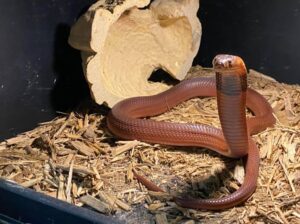
Interaction with Humans
Myths and Misconceptions
Many local myths portray them as deliberate attackers, but in truth, they spit only when cornered or provoked.
Risks to Farmers and Locals
Because they live close to human settlements, accidental encounters are common. Farmers often encounter them while working in fields or barns.
Encounters in Urban Areas
Increasing urban sprawl has led to more cobra sightings in homes, especially during dry seasons when snakes search for water.
Medical Importance
Venom Toxicity and First Aid
Immediate rinsing of the eyes with clean water is crucial. In the case of a bite, immobilize the limb and seek medical attention fast.
Antivenom Availability
Antivenom exists, but its availability varies by region. Some African clinics may have access, while rural areas often don’t.
Medical Research and Potential Benefits
Cobra venom is being studied for its potential use in treating pain, cancer, and even neurodegenerative diseases.
Conservation Status
Is the Red Spitting Cobra Endangered?
Currently, it’s not listed as endangered, but habitat loss and illegal trade pose increasing threats.
Threats in the Wild
Major risks include habitat destruction, persecution by humans, and road mortality.
Conservation Efforts
Some local conservation groups are working to educate communities and preserve habitats, though more support is needed.
Role in the Ecosystem
Predator and Prey Relationships
They control rodent populations and, in turn, serve as food for raptors, monitor lizards, and larger snakes.
Keeping the Rodent Population in Check
By feeding on rats and mice, they help maintain ecological balance and reduce crop damage for farmers.
Captivity and Pet Trade
Can It Be Kept as a Pet?
Technically, yes—but it’s strongly discouraged. Their venomous nature and spitting ability make them dangerous and high-maintenance.
Legal Issues and Ethical Concerns
In many countries, owning a Red Spitting Cobra without permits is illegal. Ethically, removing them from the wild can harm local populations.
Comparison with Other Spitting Cobras
Red Spitting Cobra vs. Black-Necked Spitting Cobra
The Black-Necked is larger and has a darker hood, but both species can spit venom effectively. The Red Spitting Cobra stands out due to its brighter coloration.
What Makes the Red Variant Unique?
Its size, color, and preferred dry habitats make it unique among spitting cobras. Plus, it’s one of the more accurate spitters in the snake world!
Fun Facts You Didn’t Know
-
Their venom doesn’t just sting—it foams when it hits moisture!
-
They can spit multiple times in quick succession.
-
Young cobras are born with full spitting ability.
-
Some locals believe they can “track” humans, but that’s just a myth.
-
They sometimes play dead to avoid confrontation!
Conclusion
The Red Spitting Cobra isn’t just another venomous snake—it’s a complex, fascinating creature that plays a vital role in its ecosystem. While it deserves respect (and a healthy dose of caution), it’s not the villain it’s often made out to be. With its bright colors, incredible defense mechanisms, and essential role in the wild, this snake is a true marvel of nature. So next time you hear about a spitting cobra, you’ll know just how remarkable this red-hued reptile really is.
FAQs
Are Red Spitting Cobras Deadly?
Yes, they can be, especially if medical help isn’t available after a bite. But fatalities are rare with prompt treatment.
How Do They Aim When Spitting?
They have special muscles that help focus their venom toward the eyes of a threat. Impressive, right?
Can You Survive a Bite or Spray?
Absolutely—with fast first aid and medical care. Washing your eyes and seeking antivenom quickly is key.
What Should You Do If You See One?
Back away slowly, don’t make sudden moves, and avoid eye contact. Never try to capture or kill it.
Are They Active Year-Round?
Mostly, yes. But they may be less active during the coldest or driest months, preferring to hide out until conditions improve.
Please don’t forget to leave a review.
